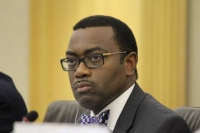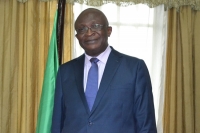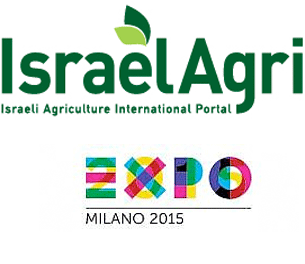Sierra Leone: Sierra Leone Outlook for 2015-17
2015/10/06
The country (Sierra Leone) is situated in Western Africa, bordering the North Atlantic Ocean, between Guinea and Liberia. Land in Sierra Leone is coastal belt of mangrove swamps, wooded hill country, upland plateau, mountains in east. Sierra Leonean land covers an area of 71740 km².
The climate is tropical; hot, humid; summer rainy season (May to December); winter dry season (December to April).
Sierra Leonean(s) speak English (official, regular use limited to literate minority), Mende (principal vernacular in the south), Temne (principal vernacular in the north), Krio (English-based Creole, spoken by the descendants of freed Jamaican slaves who were settled in the Freetown area, a lingua franca and a initial language for 10% of the people but understood by 95%).
OVERVIEW
Prior to the Ebola outbreak which started in May 2014, the authorities in Sierra Leone had made considerable evolution since the end of the civil conflict. The outlook for the economy in the medium term, however, is unfavourable following the current EVD crisis. Preliminary analysis shows that economic increase has slowed down to 6.0% in 2014 compared to the original projection of 11.3%. GDP increase is projected to go as low as -2.5% in 2015 and the economy is projected to recover slightly reaching 2.8% in 2016. Inflation is revised upwards from 8.8% to 10% for 2014 and is projected at 9.4% and 8.3% for 2015 and 2016, respectively. The EVD crisis poses a great threat to macroeconomic stability, human development and poverty reduction.
Infrastructure deficiencies pose a critical threat to private-sector development although some evolution had been made in improving the business environment prior to the outbreak of EVD. Public deficit levels (domestic and external) remain sustainable but historically, public finances have been stressed as total revenue has consistently been lower than total spending. This has attendant implications on monetary policy and the external position, which had been improving prior to the EVD outbreak. Regarding regional integration, challenges remain in the free movement of people and capital across the Economic Community of West African States (ECOWAS) nations but the situation had been improving in recent years until the advent of the emergency restrictions imposed in the wake of the EVD outbreak. Likewise, governance, gender, environment, and social indicators had been improving prior to the outbreak. Considerable effort needs to be exerted by government and development partners in implementing the emerging Post-Ebola Recovery Plan.
The spatial nexus in Sierra Leone is essentially rural/urban. The urban people has the lion’s share of services, assets and earned gain and is likely to bequeath additional to successor generations compared to the rural people. In 2010 the rural people was estimated to account for 62% of the in general people while urban was 38%. Freetown accounts for roughly 40% of the urban dwellers. There is no dedicated strategy for spatial inclusion in Sierra Leone but the essential elements of it are subsumed in the country’s medium-term plan, the Schedule for Prosperity (A4P 2013-2018).
Outlook for 2015-17
-
Prior to the Ebola (EVD) outbreak of May 2014, considerable evolution had been made since the end of the civil conflict but the economic outlook in the medium term is presently unfavourable.
-
Economic increase is expected to slow to 6.0% in 2014 as an result of Ebola (against an 11.3% projection) and it is projected to go as low as -2.5% in 2015 before reaching 2.8% in 2016.
-
The rural/urban people breakdown was 61.6% rural to 38.4% urban in 2010 with Freetown accounting for 40% of the urban people and regional development forming part of the country’s Schedule for Prosperity (A4P).
- Related Articles

Africa's Relationship With China Is Ancient History
2017/07/02 In 2002 South Africa's Parliament unveiled a digital reproduction of a map - of China, the Middle East and Africa - that some speculated could be the initial map of the African continent. The Da Ming Hun Yi Tu - the Comprehensive Map of the Great Ming Empire - was drawn up around 1389 during the Ming Dynasty, according to historian Hyunhee Park.
Africa: Making Things Happen at the Bank - 'Not a Talk Shop' - Akin Adesina
2017/07/02 Dr. Akinwumi Adesina is focusing on five areas to achieve the African and world goals for a prosperous continent since becoming president of the African Development Bank - Africa's major public financial institution in September 2015. He was a keynote speaker at this month's Corporate Council on Africa's U.S.- Africa Business Summit in Washington D.C. and moderated a lively panel with five African government ministers. He as well received the Gene White Lifetime Succcess Award from the World Child Nutrition Foundation. This week, he was named the 2017 recipient of the World Food Prize, a prestigious honor that includes a $250,000 award. In an interview in Washington, DC, Adesina discussed the Development Bank's ambitious schedule and his vision for attracting the increase capital Africa needs. Posting questions for AllAfrica was Noluthando Crockett-Ntonga.
Climate change laws around the world
2017/05/14 There has been a 20-fold increase in the number of global climate change laws since 1997, according to the most comprehensive database of relevant policy and legislation. The database, produced by the Grantham Research Institute on Climate Change and the Environment and the Sabin Center on Climate Change Law, includes more than 1,200 relevant policies across 164 countries, which account for 95% of global greenhouse gas emissions.
Finance & Economy Where’s best to invest in Sierra Leone?
2016/12/25 Eager to attract foreign investors and ensure their projects are a success, Sierra Leone has been strengthening macroeconomic situation, investment environment and foreign relations, particularly with China and the UK, to open up the wide scope of opportunities its holds beyond its mining sector to partners overseas. Minister of Finance and Economic Development Momodu L. Kargbo takes a look at the best areas for investment, the 2017 Budget’s target areas for accelerated growth, and the country’s ability to honor its credit obligations.
Education Quality: Measuring Learning Outcomes in Francophone Africa’s Primary Schools
2016/05/28 Over the last 15 years, West African governments and the international community have been successful at expanding access to primary schooling and from presently on, a ground-breaking regional learning assessment has revealed that the quality of education has remained elusive. The majority of children surveyed were not acquiring the basic literacy and math skills that are crucial for building human capital in the region.
- Sierra Leone News
-
- AFGHANISTAN: UNWTO: International tourism – strongest half-year results since 2010
- BOTSWANA: Why governments need to support the financial sector to meet the unserved needs of smallholder farmers
- BOTSWANA: International Arrivals To Africa Reach More Than 18 Million In 2017
- BOTSWANA: Africa: USA-Africa - No Policy? Bad Policy? or Both?
- BOTSWANA: Africa: U.S. State Department To Get Experienced Diplomat in Key Africa Post
- BOTSWANA: Africa’s economic growth in 2016 was driven by East Africa
- Trending Articles
-
- SOUTH AFRICA: Nigeria and South Africa emerge from recession
- BAHRAIN: Bahrain issues new rules to encourage fintech growth
- ARUBA: Director of Tourism Turks and Caicos after Irma: Tourism, visitors, hotels current status
- ANGOLA: Angola: Elections / 2017 - Provisional Data Point Out Qualified Majority for MPLA
- WORLD: How fair is our food? Big companies take reins on sourcing schemes
- CHINA: Russian firm seals energy exploration deal to drill South African shelf













